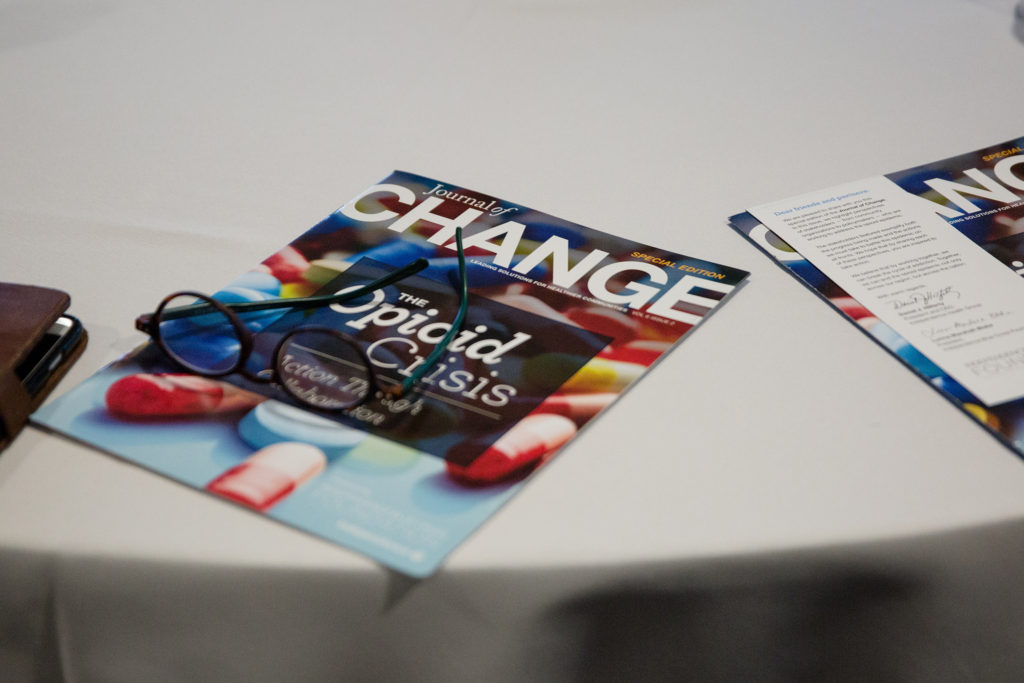Following Virginia’s deadliest year on record with opioid overdoses – 1,220 people – the Commonwealth is now acting more boldly by allocating more resources to programs dedicated to substance abuse services from federal grants. Contributions from the Substance Abuse and Mental Health Services Administration (SAMHSA), an agency within the U.S. Department of Health and Human Services, vaulted from $7.9 million in 2014 to $55.3 million in 2016 when the nationwide opioid epidemic began to show up on the public’s radar. That amount climbed to $65.3 million in 2017, the year a record number people died from the debilitating addiction.
While some may believe that the rural areas of Virginia are the most saturated with opioid overdoses, the Richmond metropolitan area has become the epidemic’s epicenter, with Henrico and Chesterfield counties and the City of Richmond holding three of the top five spots for localities with the most overdose deaths last year. The tri-county area succumb to 220 overdose deaths in 2017, accounting for 18 percent of the statewide death toll.
Moreover, Virginia Department of Health data states that emergency rooms in the Richmond region saw 1,515 patients for opioid overdose in 2017, accounting for nearly 1-in-5 opioid overdose-related ER visits in Virginia.
Of the federal grant money allocated to Virginia, $9.8 million went to boost the Virginia Department of Behavioral Health and Developmental Services’ (DBHDS) statewide prevention, treatment, and recovery network. The localities in the Richmond metro area have received $110,000, or five percent of allocated funds for substance abuse prevention, and $686,601, about 14 percent of funds to be used for treatment since the new program began in January 2017.
The state department has identified 35 community service boards scattered across Virginia to receive funding to aid their local efforts to prevent and treat opioid addiction, which includes medicine-based remedies and also education and awareness plans. Of the boards that were identified to receive aid, 23 were selected to expand patient access to medications like buprenorphine, one of the drugs commonly used in opioid addiction treatment, which is used to curb the crippling effects of withdrawal when one is heavily addicted.
In Southwest Virginia, another region hit hard by the epidemic, local officials have said that buprenorphine is being abused to the point that it is now considered the most common street drug in their communities, according to a report from the Richmond Times-Dispatch. Rosie Hobron, an epidemiologist for the Virginia Office of the Chief Medical Examiner, said the drug, as known as Suboxone, has been responsible for a handful of overdose deaths this year.
A few measures in the state legislature have been acted upon to counteract the issue of people becoming “hooked on” medication used to treat opioid addiction. In 2017, State Senator Ben Chafin (R-Lebanon) introduced S.B. 1180 for the state to adopt stricter regulations for doctors to prescribe opioids like buprenorphine.
The law, which went to effect last summer, directed the Boards of Dentistry and Medicine to created a Prescription Monitoring Program at the Department of Health Professions to annually provide a report that includes data on reporting of unusual patterns of prescribing or dispensing of a covered substance by an individual prescriber or dispenser or on potential misuse of a covered substance by a recipient.
Introduced by State Senator Bill Stanley (R-Franklin), S.B. 225 created an Opioid addiction treatment pilot program, which requires DBHDS, in partnership with community services boards, to establish a two-year pilot program in Planning District 12 – Patrick, Franklin, Henry, and Pittsylvania counties and the cities of Martinsville and Danville – to provide comprehensive treatment and recovery services to uninsured or underinsured individuals suffering from opioid addiction or opioid-related disorders.
Another Southwest Virginia-based legislator, State Senator Charles Carrico (R-Lee), introduced S.B. 804 during the 2018 General Assembly session, set to revamp the reporting of controlled substance overdoses. The bill requires the Office of the Chief Medical Examiner, as well as all state and local law enforcement agencies, emergency medical services agencies, and hospitals to report information about overdoses of controlled substances within 120 hours of receiving notification. Furthermore, the information will be made available to the public, with a quarterly report being sent to the governor.
One of the main goals of the statewide initiatives is to increase accessibility to medication in aiding people to rid themselves of addiction. With the new program, this year’s preliminary counts of opioid overdose fatalities show approximately a 13 percent year-over-year decrease in the first quarter of 2018, with 277 fatalities, down from 320 in the first quarter of 2017. However, Hobron said it is too early to form any solid conclusion about the downward trend. For instance, the number of deaths during the first quarter of the year still puts the state on pace to eclipse 1,100 deaths for the third year in a row.
Nevertheless, since the program began in January of last year, “1,001 people have been treated with medication, transportation and housing assistance, and 575 people have received continuing recovery assistance, which includes support from a trained peer recovery specialist,” according to the report.
Mellie Randall, a substance use disorder policy director for DBHDS has explained that the program continues to face difficulties with expanding access to the recovery drugs, in one part because the drugs are expensive, but also because many physicians still view substance abuse disorder as a choice rather than a disease. She said that although around 800 physicians are authorized to administer medication-assisted treatment in Virginia, only 200 are willing to have that fact publicly advertised.
DBHDS has applied for another grant from SAMHSA for $31.2 million over the next two years to further expand funding to the community boards. As programs administer opioid reversal drugs to patients, the program’s success will not be measured just on how many overdose deaths the Commonwealth avoids in the coming year. The program’s success will be measured by the overall outcomes for the patients, which includes, among other factors, staying in treatment, increased employment, and engagement in education.

